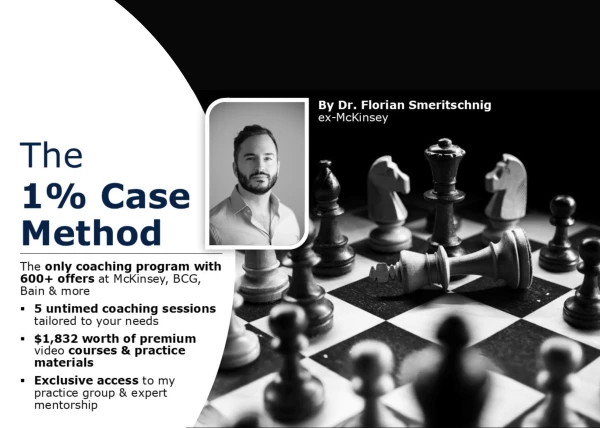Hi everyone.
How do we sense check our final answer to see if it's indeed correct, or if it makes sense?
I've read somewhere online where it's recommended to sense check our answer before identifying the implications of the final answer.
Thanks a lot!
Maths Final Answer Sense-Checking


Hey there,
Yes, that is a crucial step before communicating the answer. If you make a mistake in math and spot it, it will hardly influence your performance.
However, once the wrong number is communicated its harder to recover from.
There are two types of feasibility checks.
1. If you are quick enough, calculate twice. Some candidates have this ability and due to their speed, they can actually perform the calculations twice and still be within time limits.
2. If you are in the normal speed range like most of us, there are a few standard errors that can be prevented by the following measures:
- Check whether you have added 0s or lost them (using the scientific notation to calculate with large numbers helps a lot here)
- Moved punctuation somewhere along the way
- Do a quick % check if the number is in the right ballpark by comparing and relating to other numbers from the case math brief
- Check your units: did you calculate all numbers with their respective units and translated them correctly into a common uni?
- At the very least you should notice when a number is either way to big or way too small for the question asked (e.g., an ice cream parlor with 5bn yearly revenue should raise some eyebrows...)
Cheers,
Florian

Hi there,
Probably the easier way is to compare the number with one of the input variables.
Examples:
- If revenues are $20M, you subtract all the costs and you find that your profits are $25M – you have clearly done a mistake somewhere
- If they ask you 30% of 127 and you get – say – 3.8 as an answer, you may quickly check that 10% would be 12.7, thus 3.8 cannot be the right number
It is quite a basic step but I noticed a few candidates don’t do that and say out loud a number that doesn’t make any sense. When this happens, the confidence of the interview in you decreases substantially, as they know you could repeat the same exact mistake with a client.
Hope this helps,
Francesco

Hi there,
Agreed with Florian + Francesco.
There are really two main ways here:
- Quickly re-do the math (if it can be checked quickly)
- Compare your answer to your baseline (i.e. any previous number that was calculated or given in the case). Here, you're essentially making sure that you're in the right magnitude

Hello!
Agree with other coaches, super important point!
On top of what they mentioned, you can also try to problem-solve it with the interviewer:
How does the client feel about this preliminar number, considering his/her maket knowledge?
Hope it helps!
Cheers,
Clara






